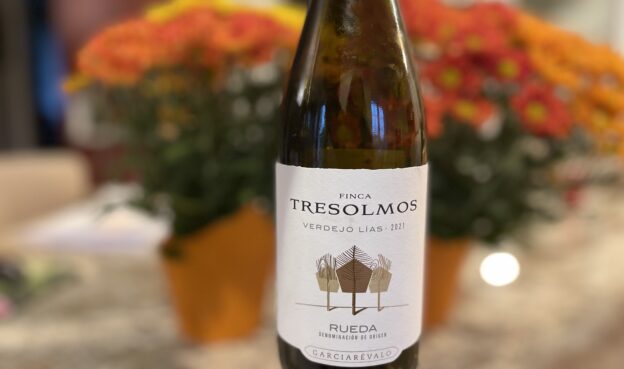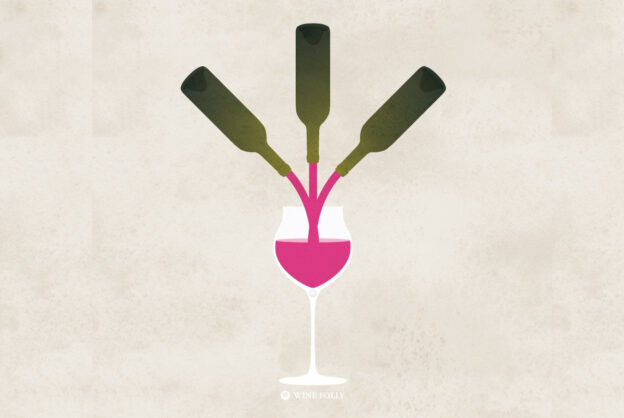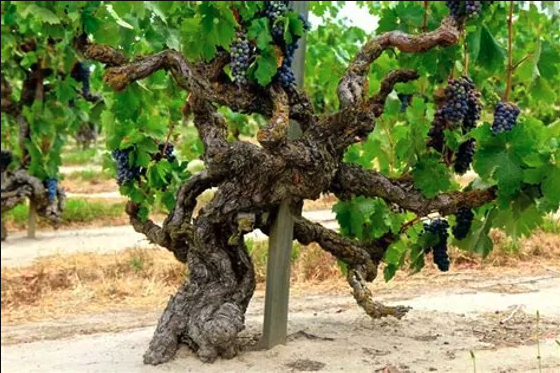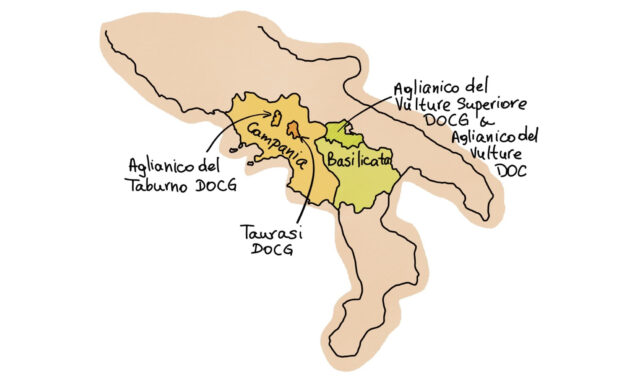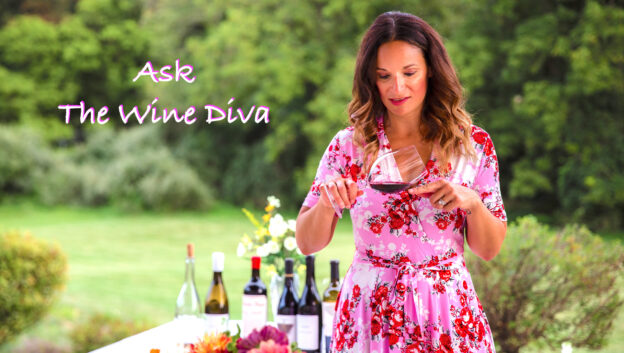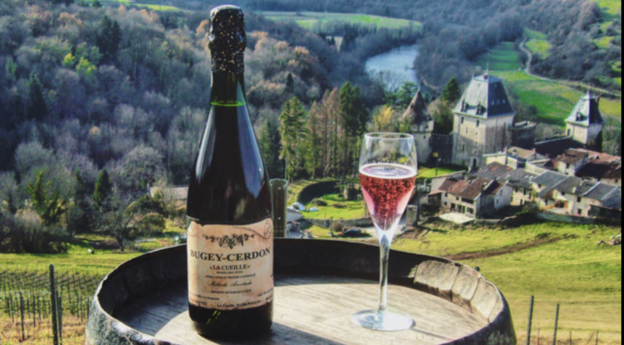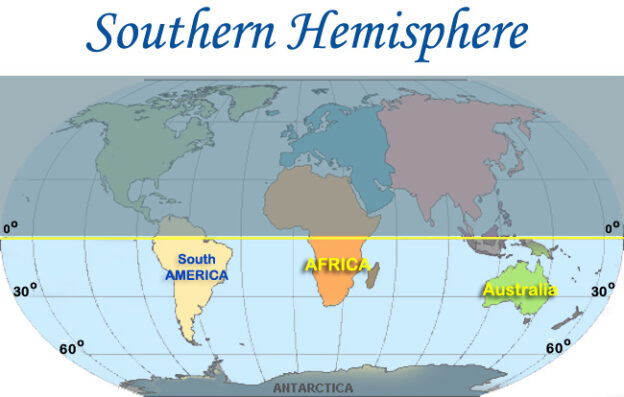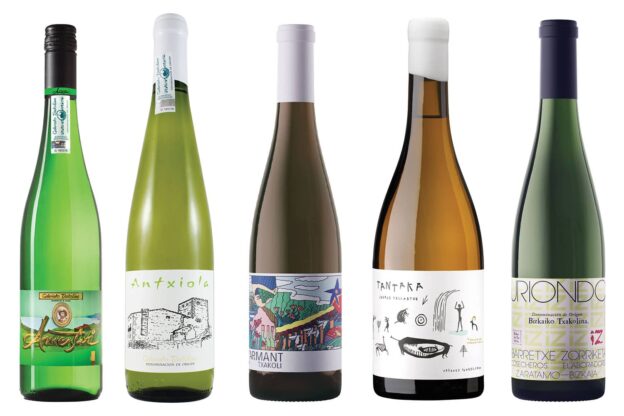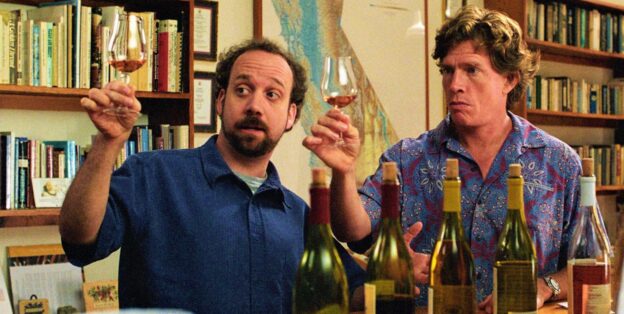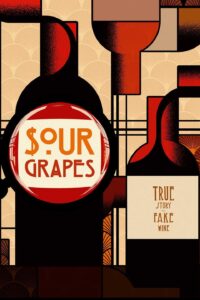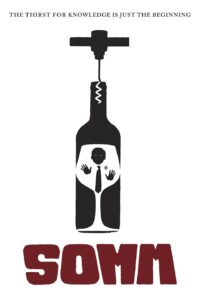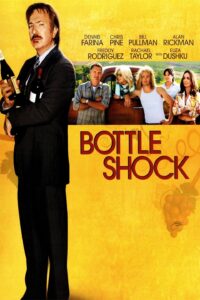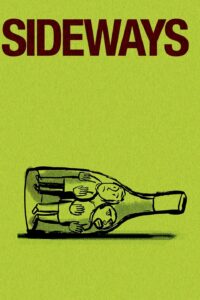Have a wine question? Send me an email!
 What are Wine Legs?
What are Wine Legs?
 Wine Legs, also called Wine Tears, are a fun quality to observe in your wine glass, but what do they really tell you? Legs are those droplets that slide down the inside of your glass after you swirl your wine. They have absolutely nothing to do with a wine’s quality and everything to do with a scientific phenomenon called the Gibbs-Marangoni Effect. This effect essentially gives you clues as to the wine’s alcohol and sugar content. Thicker droplets and more droplets indicate a wine with higher alcohol levels while slower, more viscous droplets indicate a wine with higher sugar levels. Upon swirling, alcohol evaporates and surface tension pushes the liquid up the sides of your glass. When the alcohol evaporates from the liquid, the remaining wine/water mix slides back down the glass. This is why higher alcohol wines have heavier tears. If you have a closed bottle of wine and you shake it, this phenomenon doesn’t occur! This is because no evaporation is happening. Evaporation of alcohol is the key to why wine tears appear.
Wine Legs, also called Wine Tears, are a fun quality to observe in your wine glass, but what do they really tell you? Legs are those droplets that slide down the inside of your glass after you swirl your wine. They have absolutely nothing to do with a wine’s quality and everything to do with a scientific phenomenon called the Gibbs-Marangoni Effect. This effect essentially gives you clues as to the wine’s alcohol and sugar content. Thicker droplets and more droplets indicate a wine with higher alcohol levels while slower, more viscous droplets indicate a wine with higher sugar levels. Upon swirling, alcohol evaporates and surface tension pushes the liquid up the sides of your glass. When the alcohol evaporates from the liquid, the remaining wine/water mix slides back down the glass. This is why higher alcohol wines have heavier tears. If you have a closed bottle of wine and you shake it, this phenomenon doesn’t occur! This is because no evaporation is happening. Evaporation of alcohol is the key to why wine tears appear.
 What are Tannins?
What are Tannins?
 Tannins are compounds found in the skin and pips (seeds) of a grape, and also come from the wood of wine barrels. You will find higher tannins in red wines and almost none in white wines because red wine is usually soaked and fermented on their skins (to extract color along with tannins) and often aged in oak, while white wines are usually made by draining the juice quickly off the skins and fermenting in stainless steel. The major exception to this rule is orange wines, which are made form white grapes soaked on their skins. A higher level of tannin in wine can be the result of grapes with thicker skins, a longer time soaking on skins, and/or a longer time aging in barrel.
Tannins are compounds found in the skin and pips (seeds) of a grape, and also come from the wood of wine barrels. You will find higher tannins in red wines and almost none in white wines because red wine is usually soaked and fermented on their skins (to extract color along with tannins) and often aged in oak, while white wines are usually made by draining the juice quickly off the skins and fermenting in stainless steel. The major exception to this rule is orange wines, which are made form white grapes soaked on their skins. A higher level of tannin in wine can be the result of grapes with thicker skins, a longer time soaking on skins, and/or a longer time aging in barrel.
Tannins are an important structural component to a wine, lending texture, flavor, balance and ageability. Tannins are bitter and astringent, as well as mouth drying. If you slosh around a mouthful of wine and swallow, that drying sensation left behind on your gums and the roof of your mouth are caused by tannins – the dryer the sensation, the higher the tannin level in the wine. For an obvious example, taste a glass of Pinot Noir (low tannins) next to a glass of Barolo (very high tannins).
Tannins can also have textural differences, with some wines described as having smooth, soft or ripe tannins and others having rough, chalky or grippy tannins. Much of this can be the result of the grape variety, the climate (warmer climates tend to produce riper, softer tannins), the wine’s age (tannins may be rougher when a wine is young), and whether the wine is aged in oak (oak barrels will help soften tannins).
Tannins are also a preservative of wine, acting as an antioxidant. Wines with higher tannins are able to be cellared longer without going bad, and these tannins often “smooth out” with time, becoming softer and silky.
 What are sulfites and do they cause headaches?
What are sulfites and do they cause headaches?
 This is the single most common question I get at my wine tastings, so let’s break it down. Sulfites are a compound that occur naturally in wine, but can also be added to wine at certain stages of the winemaking process. Sulfites do two things: 1) they are an anti-oxidant used to protect wine from becoming oxidized (turning brown, losing fruit flavor, and turning to vinegar); 2) they are also an anti-microbial and preservative inhibiting bacteria that can lead to funky, off flavors in your wine. Sulfites have played a major role in modern winemaking to significantly improve the quality and ageability of wines. So why do they have such a bad rep?
This is the single most common question I get at my wine tastings, so let’s break it down. Sulfites are a compound that occur naturally in wine, but can also be added to wine at certain stages of the winemaking process. Sulfites do two things: 1) they are an anti-oxidant used to protect wine from becoming oxidized (turning brown, losing fruit flavor, and turning to vinegar); 2) they are also an anti-microbial and preservative inhibiting bacteria that can lead to funky, off flavors in your wine. Sulfites have played a major role in modern winemaking to significantly improve the quality and ageability of wines. So why do they have such a bad rep?
Many people believe sulfites cause headaches. This has been widely studied, but never proven to be true. So what is causing your headaches after drinking wine? There are a few possible culprits:
- Alcohol! This is the obvious answer, but often overlooked. You don’t have to get completely drunk with the world’s worst hangover to get headaches from alcohol and dehydration. Even moderate amounts of alcohol and too little water can cause a headache. Make sure you stay hydrated while drinking and see if that helps.
- Tannins. Tannin is a compound in wine (mainly red wine) that causes that mouth drying effect. Some people may have a tannin sensitivity. If drinking strong black tea or eating walnuts (both of which also have high tannins) bothers you, it could be a tannin sensitivity.
- Histamines. Wine has high levels of histamines (as does other foods such as fermented foods and dairy products). High levels of histamines can trigger an immune response in the body, resulting in symptoms like headaches, skin irritation and stomach/GI distress. If you suspect histamines may be the cause of your headaches, you can try taking an antihistamine like Claritin before drinking.
- Sulfites. A small number of people (estimated at 1 in 100) may actually have a sensitivity to sulfites, but this is rare. How would you know? Since sulfites act as a preservative, they are found at high levels in many packaged foods. Dried fruits can have over 2,000ppm, which is over 5 times more than what is allowable in wine! If raisins and dried apricots don’t give you headaches, you do not have a sulfite sensitivity.
 What is Structure?
What is Structure?
 Structure refers to the main elements in wine that can be assessed to determine a wine’s quality: acid, tannin, sweetness, alcohol, body and flavor. Ideally, these elements will balance each other to produce a quality product. For example, sweetness can curb the puckering edge of high acidity, refreshing acid can tone down the bitterness of high tannins, fruit intensity can tame the heat of high alcohol, etc. Everyone’s palates are different and the level of each structural element in a wine will appeal or repel people differently, but one element should never overwhelm the others or be missing from the equation. A wine with too low tannin or alcohol may taste thin, a wine with no acid may be flabby, a wine that lacks fruit concentration may be bland and boring. A skilled winemaker will use these structural elements to craft wines that are harmonious, balanced and therefore of high quality.
Structure refers to the main elements in wine that can be assessed to determine a wine’s quality: acid, tannin, sweetness, alcohol, body and flavor. Ideally, these elements will balance each other to produce a quality product. For example, sweetness can curb the puckering edge of high acidity, refreshing acid can tone down the bitterness of high tannins, fruit intensity can tame the heat of high alcohol, etc. Everyone’s palates are different and the level of each structural element in a wine will appeal or repel people differently, but one element should never overwhelm the others or be missing from the equation. A wine with too low tannin or alcohol may taste thin, a wine with no acid may be flabby, a wine that lacks fruit concentration may be bland and boring. A skilled winemaker will use these structural elements to craft wines that are harmonious, balanced and therefore of high quality.
 What is the impact of California’s heat wave on grapevines?
What is the impact of California’s heat wave on grapevines?
 California has been experiencing their worst heat wave in the state’s history. Napa Valley broke their hottest temp on record last week, reaching 109 degrees. How will this impact the 2022 harvest? All is not lost for grapegrowers. A grapevine will actually shut down, ceasing photosynthesis and grape ripening, when temps reach 96 degrees. That means temps in the low 90s are actually more concerning than temps over 100! If a grapevine is given sufficient water during hot periods, it will help prevent grape shriveling and over-ripening. Dehydration will cause raisining and a spike in sugar, so winemakers will try to avoid this at all costs. Harvest dates are also critical. Many growers are choosing to pick earlier this year before sugar levels get too out of control. Sugar levels are determined by a unit called Brix, and these will monitored closely. Once the grapes hit the desired Brix level, they will be picked. It just means the grapes are reaching the desired Brix levels earlier this year than in prior vintages, so are still being picked at the right Brix levels before they get too high. Excellent wines will still be made in 2022, but some may be a bit riper and richer this vintage.
California has been experiencing their worst heat wave in the state’s history. Napa Valley broke their hottest temp on record last week, reaching 109 degrees. How will this impact the 2022 harvest? All is not lost for grapegrowers. A grapevine will actually shut down, ceasing photosynthesis and grape ripening, when temps reach 96 degrees. That means temps in the low 90s are actually more concerning than temps over 100! If a grapevine is given sufficient water during hot periods, it will help prevent grape shriveling and over-ripening. Dehydration will cause raisining and a spike in sugar, so winemakers will try to avoid this at all costs. Harvest dates are also critical. Many growers are choosing to pick earlier this year before sugar levels get too out of control. Sugar levels are determined by a unit called Brix, and these will monitored closely. Once the grapes hit the desired Brix level, they will be picked. It just means the grapes are reaching the desired Brix levels earlier this year than in prior vintages, so are still being picked at the right Brix levels before they get too high. Excellent wines will still be made in 2022, but some may be a bit riper and richer this vintage.
